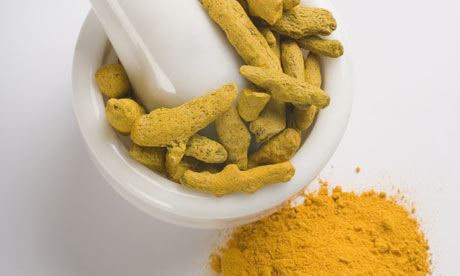
Eating high-fat curries may not be as bad for us as we thought - at least, not if we lace them with turmeric. Scientists at Boston's Tufts University found that mice fed a high-fat diet that contained curcumin, a component of turmeric, put on less weight.
This puts the spice in that magic group of foods with health-giving properties - along with garlic, ginger and fish oils.
Like ginger, turmeric is a rhizome, a horizontal stem of a plant that grows underground. Generally speaking, it is prized more for its colour than its flavour: turmeric is the oldest natural food dye in the world, and is now seen in ingredients lists as E100. In my opinion, however, this downgrading from flavour to colour is largely due to the spice we get in Britain being old and dull by the time it reaches us. In Zanzibar, I got the shock of my life when I cut into a nugget just dug from the earth: it had an intense smell, was dazzlingly bright and practically orange in colour, with an interesting, bitter, earthy flavour.
Indispensable all over Asia, turmeric forms the basis of most curry powders, and during the Raj, we Brits loved it in our piccalilli and kedgeree. These days it is commonly used in the batter for fish and chips, and (mistakenly) as a replacement for expensive saffron in dishes from paella to fish pie or sauces such as rouille.
It is the unsung hero of the spice rack, though, so my advice to unlocking the inner flavour would be to go to the kind of shop or market where you are more likely to encounter turmeric that was ground in this century, then fry it gently with something simple to let the flavour come out.
Turmeric seems to respond particularly well to other roots, such as carrots and spuds - especially with a few mustard seeds - as well as the bigger meats such as mutton and lamb. Tomatoes, too. It is only by giving it a chance to go pretty-much solo that we cooks can really get to grips with its hidden depths.

